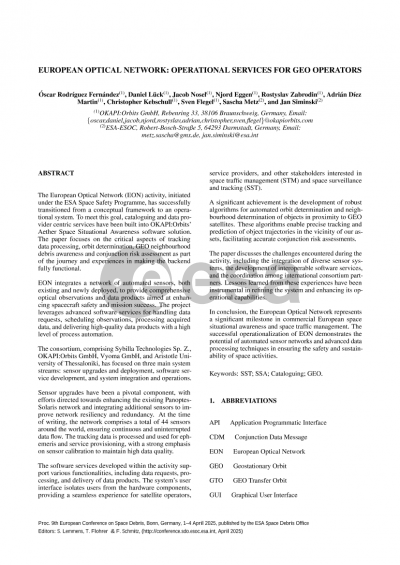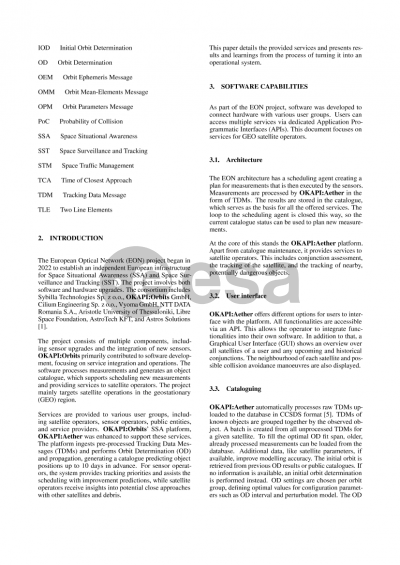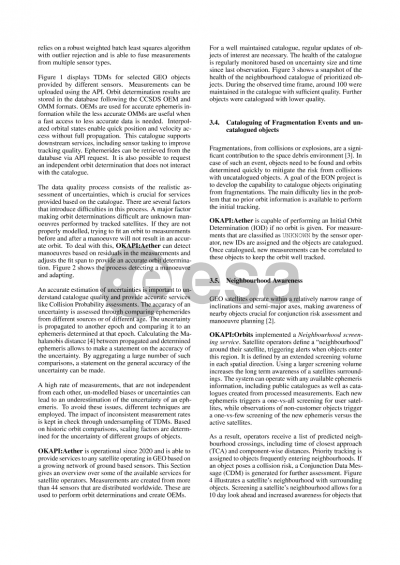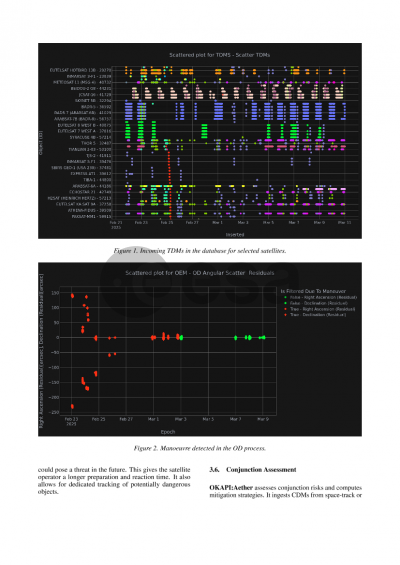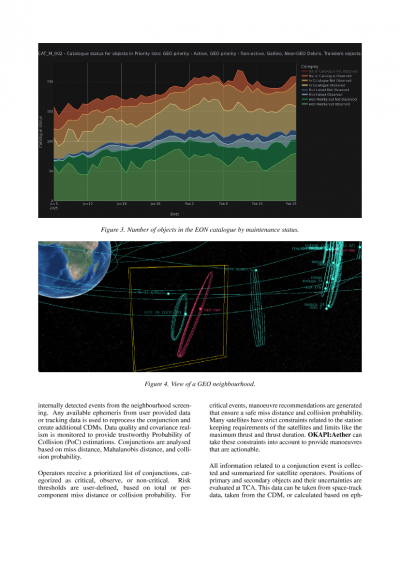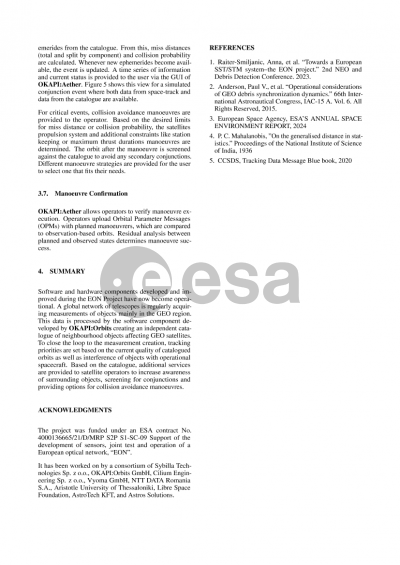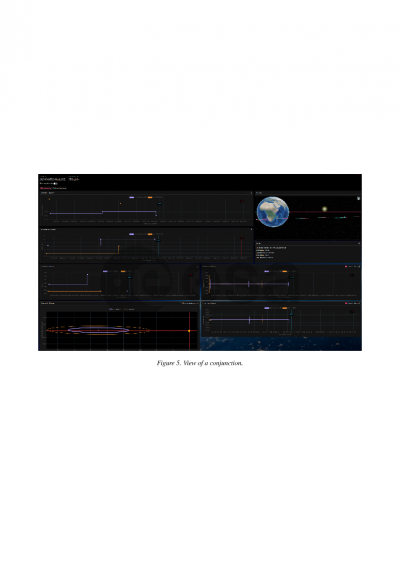Document details

Abstract
The European Optical Network (EON) activity, initiated under the ESA Space Safety Programme, has successfully transitioned from a conceptual framework to an operational system. To meet this goal, cataloguing and data provider centric services have been built into OKAPI:Orbits’ Aether Space Situational Awareness software solution. The paper focuses on the critical aspects of tracking data processing, orbit determination, GEO neighbourhood debris awareness and conjunction risk assessment as part of the journey and experiences in making the backend fully functional.
EON integrates a network of automated sensors, both existing and newly deployed, to provide comprehensive optical observations and data products aimed at enhancing spacecraft safety and mission success. The project leverages advanced software services for handling data requests, scheduling observations, processing acquired data, and delivering high-quality data products with a high level of process automation.
The consortium, comprising Sybilla Technologies Sp. Z., OKAPI:Orbits GmbH, Vyoma GmbH, Aristotle University of Thessaloniki, has focused on three main system streams: sensor upgrades and deployment, software service development, and system integration and operations.
Sensor upgrades have been a pivotal component, with efforts directed towards enhancing the existing Panoptes-Solaris network and integrating additional sensors to improve network resiliency and redundancy. At the time of writing, the network comprises a total of 44 sensors around the world, ensuring continuous and uninterrupted data flow. The tracking data is processed and used for ephemeris and service provisioning, with a strong emphasis on sensor calibration to maintain high data quality.
The software services developed within the activity support various functionalities, including data requests, processing, and delivery of data products. The system’s user interface isolates users from the hardware components, providing a seamless experience for satellite operators, service providers, and other stakeholders interested in space traffic management (STM) and space surveillance and tracking (SST).
A significant achievement is the development of robust algorithms for automated orbit determination and neighbourhood determination of objects in proximity to GEO satellites. These algorithms enable precise tracking and prediction of object trajectories in the vicinity of our assets, facilitating accurate conjunction risk assessments.
The paper discusses the challenges encountered during the activity, including the integration of diverse sensor systems, the development of interoperable software services, and the coordination among international consortium partners. Lessons learned from these experiences have been instrumental in refining the system and enhancing its operational capabilities.
In conclusion, the European Optical Network represents a significant milestone in commercial European space situational awareness and space traffic management. The successful operationalization of EON demonstrates the potential of automated sensor networks and advanced data processing techniques in ensuring the safety and sustainability of space activities.
Preview
